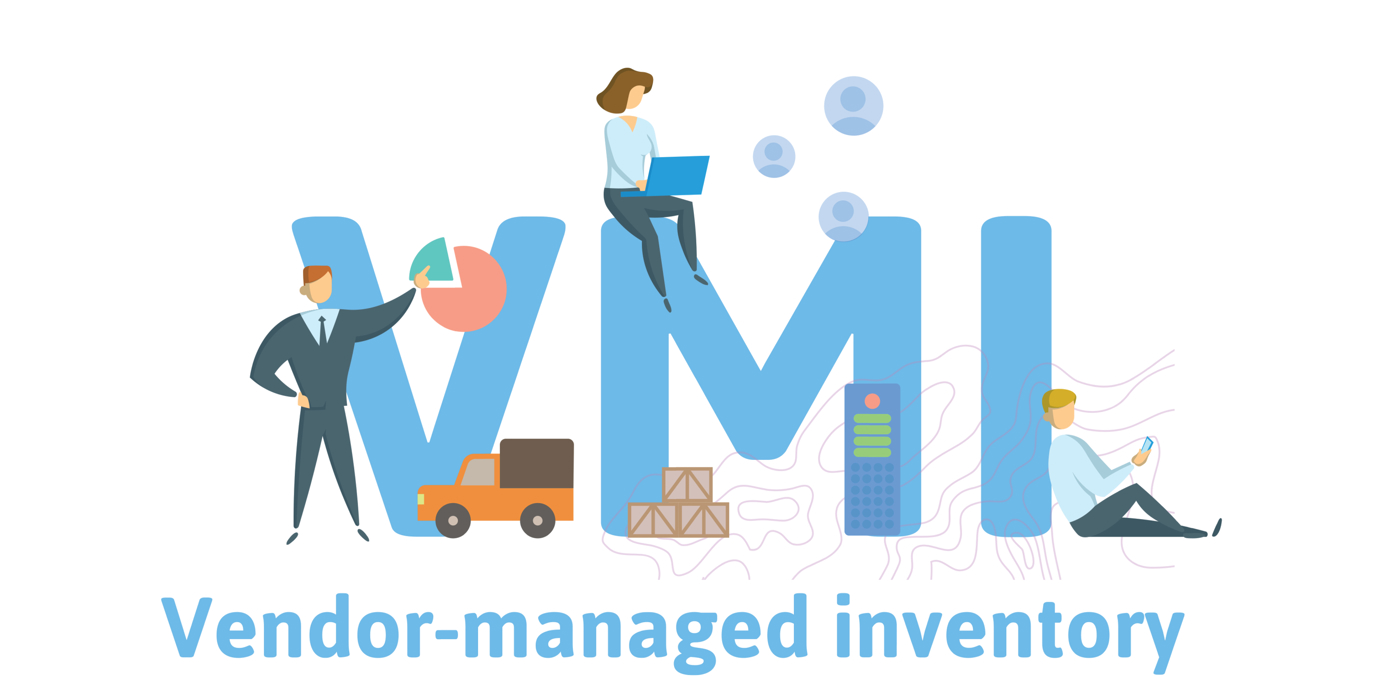3 Steps for Making Vendor Managed Inventory (VMI) Work

What is vendor managed inventory?
In theory, Vendor Managed Inventory (VMI) is a mutually beneficial system for optimizing inventory flows and reducing supply chain costs for vendors and their buyers. VMI refers to a supply chain system in which the vendor takes responsibility for the inventory instead of the buyer!
What types of vendor managed inventory are there?
VMI usually takes one of three forms:
1) Consigned - Consigned inventory systems requiring the vendor to own the inventory and keep it in stock at the customer site
2) Customer-owned - Partnerships where vendors visit the customer site, place orders, and take responsibility for keeping the customer-owned inventory in stock
3) Self-service - lately, vendors are supplying customers with self-service VMI apps that allow buyers to take more control of inventory ordering, tracking usage and getting useful reports.
Regardless of the details of the contract and process, successful VMI systems should result in improved business performance by reducing the risk of supply chain issues like stockout situations, bullwhip effect, and inflated carrying costs. Having the right amount of inventory at the right time through VMI means a reduction in planning and ordering costs, storage costs, shrinkage, and more. However, a successful VMI relationship requires close, ongoing collaboration between buyers and vendors.
Here are three steps to making your VMI system work for all involved:
1) Begin with a detailed contract
The data exchange and close collaboration required for a successful VMI arrangement means that buyers and suppliers need a solid foundation of trust and communication. Buyers need to trust that the insights into their sales data will be used responsibly and that suppliers will accurately forecast lead times and required inventory in order to consistently meet buyer needs. Vendors must trust that the extra burden of managing inventory will be worth the resulting sales and relationships.
One of the best ways to achieve this is by drawing up a detailed contract to ensure that all parties thoroughly understand the expectations of their partnership. The beginning of the relationship will likely involve:
- Outlining how buyer data may be used
- Setting up new schedules and thresholds for inventory shipments
- Determining minimum and maximum inventory levels.
Laying a strong groundwork for clear expectations and ongoing communication will make your long-term relationship that much easier to streamline. In the last few years, many VMI relationships have transitioned from in-person partnerships to largely digital self-service systems. This constitutes even more reason for suppliers and buyers to sync their expectations thoroughly up front, since ongoing communication may look different than it did in past years.
2) Use an accurate and reliable stockroom inventory tracking app
The success and efficiency of your VMI supply chain processes will ultimately depend on your systems for exchanging onsite inventory data. Vendors need to know when to send new inventory as well as how much to send. Some buyers may rely on spreadsheets, pen and paper, or e-commerce integration in order to send data on sales patterns and demand forecasts to their vendors. However, these systems demand extensive resources and ultimately waste employee time while creating room for error and inefficiency overall.
Errors with stockroom inventory orders can lead to costly consequences such as buyers ending up overstocked and losing money on storage, or understocked and losing potential sales. This waste of money, inventory, and employee time is avoidable with the right tools, such as the eTurns TrackStock Replenish App.
TrackStock can be used in a VMI or CMI (customer managed inventory) model. In the VMI model, vendors scan QR codes of products that need to be reordered, send the digital purchase orders to the buyer for approval (optional), and then send the orders directly to all relevant suppliers’ ERP systems. In the customer-managed inventory model, buyers do self-service digital ordering, vendors get the order paperlessly and without onsite visits. With both VMI and CMI, TrackStock reduces procurement costs by 90%. With the right tools for data collection, communication, and management, buyers and vendors can work together seamlessly to keep inventory at the desired level.
3) Continuously analyze the efficiency of your processes
With in-depth tools to help you track your inventory, patterns, and data, you can come back to your processes as many times as you need until you’re seeing the efficiency and profitability you need from your VMI processes. The best VMI systems work seamlessly without demanding more employee hours or company resources – inefficiency is expensive!
In many cases, more detailed inventory data may help smooth out bumps in your VMI processes. Fortunately, solutions such as the eTurns TrackStock Cart can help you zero in on your inventory on the go, without demanding more employee time or complicated processing. With weight sensors on a mobile cart, you can automate inventory replenishment without slowing down your day-to-day operations. For those who don’t need a mobile option, eTurns TrackStock SensorBins help automate replenishment without human intervention through weight sensors in storage bins.




